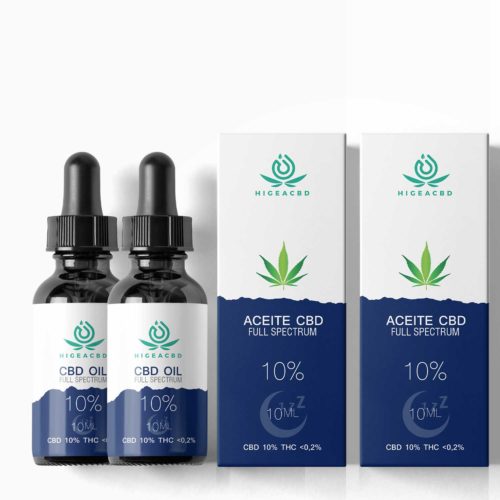Other plants that generate cannabinoids
There are other plants that produce cannabinoids besides cannabis. There are a few plants that we will talk about below, which contain chemicals with a similar structure to the traditional cannabinoid, but with a somewhat different biological effect. They are usually referred to as cannabimimetic compounds.
In other words, cannabis is not the only plant that produces valuable phytocannabinoids, despite its long history of recreational and therapeutic use. Alternatives to cannabis phytocannabinoids include cocoa, black pepper, echinacea, electric daisies and Japanese liverwort.
Although the structure of each plant varies significantly, they all have a biological healing effect.
Showing 1–8 of 25 results
-
Sale!
Aceite Higea CBD 10%
29,95€ Add to cart -
Sale!
Hygea CBD Oil 20%.
49,90€ Add to cart -
Hygea CBD oil 30%.
89,95€ Add to cart -
Sale!
Aceite Higea CBD 5%
19,95€ Add to cart -
Higea CBD muscle pain cream 50 ml
21,95€ Add to cart -
Basic Pack
47,41€ Add to cart -
Medium pack
94,81€ Add to cart -
Sale!
Healing Balm Hygea CBD
19,95€ Add to cart
Meet the other plants that generate cannabinoids
Here we share with you other plants that generate cannabinoids, with their distinctive characteristics.
Cocoa
The cocoa plant, or Theobroma Cocoa, is a superfood rich in compounds that make our brains “happy”. Cocoa is high in anandamide, a neurotransmitter naturally created in the brain. THC is the body’s version of anandamide, causing a feeling of euphoria similar to when you’re high.
However, you will only get the full benefits of cocoa if it is unprocessed and comes from a natural source. Black truffles, like cocoa, produce feelings of satisfaction and happiness to our body and brain.

Black pepper
This is another plant that produces cannabinoids. In fact, black pepper is the plant that bears the most striking resemblance to cannabis. Beta-caryophyllene can be found in both black pepper and cannabis strains. This substance is what gives black pepper, and many cannabis strains, their distinctive aromas.
It is also important to note that black pepper and cannabis trigger responses at the same cannabinoid receptors. Not only that, both plants have anti-inflammatory and analgesic qualities.
Acmella oleracea
Acmella oleracea is a beautiful bright flower, which brings us something unexpected and surprising. This flower has the ability to inhibit pain receptors in the nerve endings. Both the Acmella oleracea plant and Cannabis help reduce pain and inflammation in the body.
Acmella oleracea was found to block pain receptors on its nerve endings due to studies conducted at Cambridge University. It has long been used as an anesthetic gel in the Amazon region.
Cannabinoids called N-isobutylamides, which affect CB2 receptors and regulate pain and inflammation throughout the body, are the substances that cause effective pain relief.
Echinacea
It is also another plant that produces cannabinoids. This plant is used to treat cold and flu symptoms. Even conditions such as anxiety, migraines, fatigue, nausea and arthritis are among the symptoms it can alleviate.
The way this flower decreases and manages pain, inflammation and strengthens the immune system is comparable to how cannabis does. Echinacea, on the other hand, uses cannabimimetics instead of cannabinoids to activate the endocannabinoid system (in particular, the CB1 receptor).
Due to their interaction with the endocannabinoid system, and in terms of pain, inflammation and the immune system, the N-alkyl amides (NAA) found in echinacea are extremely comparable to THC.

Japanese liverwort
For people who have problems with their digestive system, this plant may give them the relief they need. Japanese hepatica is well known for its effectiveness in treating bladder, liver, gallbladder and other associated problems.
In addition, many people with respiratory difficulties, such as sinusitis or bronchitis, can also benefit from the use of this plant. This is because, like cannabis, Japanese hepatica is effective in the treatment of respiratory disorders, especially chronic ones.
Beyond their health benefits, which include no negative side effects, no addiction, and all-natural, phytocannabinoids that functionally interact with our receptors are key to our health. Whether it’s pain, illness, or chronic disorders.
Rhododendron sinogrande
Essential oil derived from Rhododendron sinogrande, one of the world’s most antibacterial plants, can destroy everything from staph infection to cancer cells, according to Italian researchers at the University of Padua.

Kawa-Kawa(Piper methysticum)
Also known as Kava, this plant has increased in popularity as a natural cure for anxiety in Western countries. Consequently, it is traditionally used in a medicinal tea to relieve anxiety, chronic pain and provide calming effects.
As you may have noticed, the effects of Kawa-Kawa are remarkably similar to those of cannabis. This is because a molecule of kava binds to the same receptor as THC.
On the other hand, this plant also contains a number of chemicals known as kavalactones, one of which, yangonin, interacts directly with the CB1 receptor, which is found throughout the central nervous system. Kavalactones, like cannabis, bind to regions of the brain associated with addiction and cravings.
Black truffles(Tuber melanosporum)
Black truffles produce the same anandamide, or “happiness molecule,” as cannabis and chocolate, according to Italian experts. As stated above, anandamide is an endocannabinoid produced naturally by our body that affects mood and pain perception by binding to CB1 receptors.
As a curious fact, truffles are much older than cannabis, according to researcher Mauro Maccarrone, who studies anandamide in black truffles. According to a recent study, the black truffle has been around for approximately 156 million years, while cannabis is believed to have been around for 70 to 110 million years.

Conclusion
It is important to note that while all these plants that generate cannabinoids, provide us with alternatives to cannabis phytocannabinoids and their benefits, cannabis provides us with the benefits of all of them in one plant.
Although we should not completely discard modern medicine, it is a good idea to consider these therapeutic alternatives that do not produce negative side effects, nor do they pose a danger of addiction.
Related articles
Hemp liquor
There are many important things about hemp liqueur that you should know, beyond how to prepare the drink.
CBD y acupuntura
Acupuncture is an ancient relaxation technique. Does its CBD combination make it more effective? Come in and find out!
What are anthocyanins?
Anthocyanins is one of the flavonoids present in the cannabis plant that has made its appearance in many scientific journals.
What are flavanols?
Flavanols belong to the group of flavonoids, essential phytonutrients for our body and present in cannabis. Enters!
Tetrahidrocannabinol
Know that it is THC, or tetrahydrocannabinol, and why it is the active compound that produces psychoactive effects when consuming marijuana.
Marijuana plant properties
Know the properties of the medical marijuana plant and enjoy its benefits for your body. Deliveries in 24 hours!
Subscribe to our newsletter
Subscribe and receive a 10% discount on your purchase.
Store
Categories
Guides
Legal notice and privacy policy
















